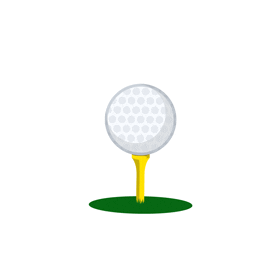

Hitting a Golf Ball with B
by: Sarah Northcutt
Rationale: This lesson will help children identify /b/, the phoneme represented by B. b Students will learn to recognize /b/ in spoken words by learning a sound analogy (playing golf) and the letter symbol b, practice finding /b/ in words, and apply phoneme awareness with /b/ in phonetic cue reading by distinguishing rhyming words from beginning letters.
Materials: Primary paper and pencil; chart with "Bill and Betty baked brown bread for Barbara’s baby"; drawing paper and crayons; word cards with BIG, BED, BOSS, BEND, BARK, and BAKE; assessment worksheet identifying pictures with /B/
Procedures:e 1. Say: Our written language is a secret code. The tricky part is learning what letters stand for—the mouth moves we make as we say words. Today we're going to work on spotting the mouth move /b/. We spell /b/ with letter B. B sounds like being outside in the cold weather (brrrr).
2. Let's pretend we are playing golf with a golf club /b/, /b/, /b/. [pretend to be having a golf club] /b/ sound is made by pressing your lips together and pushing the air out of your mouth by moving your lips apart
3. Let me show you how to find /b/ in the word bend. I'm going to stretch bend out in super slow motion. Bbb-e-e-end. Slower: Bbb-e-e-e-nnn-d.
4. Let's try a tongue tickler [on chart]. Bill and Betty gave a neighbor names Barbara. Barbara just had a little baby. When barabara came home with the baby, Bill and Betty brought them bread. Here’s our tickler: " Bill and Betty baked brown bread for Barbara’s baby." Everybody say it three times together. Now say it again, and this time, stretch the /b/ at the beginning of the words. "Bbbill and Bbbetty bbbaked bbbrown bbbread for Bbbarbbbara’s bbbabby.." Try it again, and this time break it off the word: "/B/ ill and /B/ etty /b/ aked /b/ rown /b/ read for /B/ arbara’s /b/ aby.
5. [Have students take out primary paper and pencil]. We use letter B to spell /b/. lowercase b looks like a golf club. Let's write the lowercase letter b. start at the top of the line and draw a straight line to the bottom line. Below the dotted line, draw a circle connecting to the line on the right side making a lower-case b... after I come by and check the first one, write 10 more to get the letter down.
6. Call on students to answer and tell how they knew: Do you hear /b/ in fan or band? blinder or lip? back or front? blue or hide? bulb or weight? Say: Let's see if you can spot the mouth move /b/ in some words. Act like you are swinging a golf club if you hear /b/: an, bunny, big, drew, basket, bead, they, build, green, beef.
7. Say: "Let's look at an alphabet book. ‘My “B” Book. Ask children if they can think of other words with /b/. Ask them to think of some of their favorite things (can be sport, food, activity) that starts with the letter b... Get them to write the word and draw a picture of what it is.
8. Show BIG and model how to decide if it is big or dig: The B tells me to brush my teeth, /f/, so this word is bbb-ig, big. You try some: BED: bed or led? BOSS: boss or floss? BEND: bend or send? BARK: bark or park? BAKE: bake or rake?
9. For assessment, distribute the worksheet. Students color the pictures that begin with B. Call students individually to read the phonetic cue words from step #8.k
Reference:
Sarah Jane Brock, My B Book https://www.youtube.com/watch?v=fPeMtCRN5rU
Assessment worksheet: https://www.superteacherworksheets.com/phonics-beginningsounds/letter-b_WFFMM.pdf?up=h
Go back to Communications Page
Go back to home page